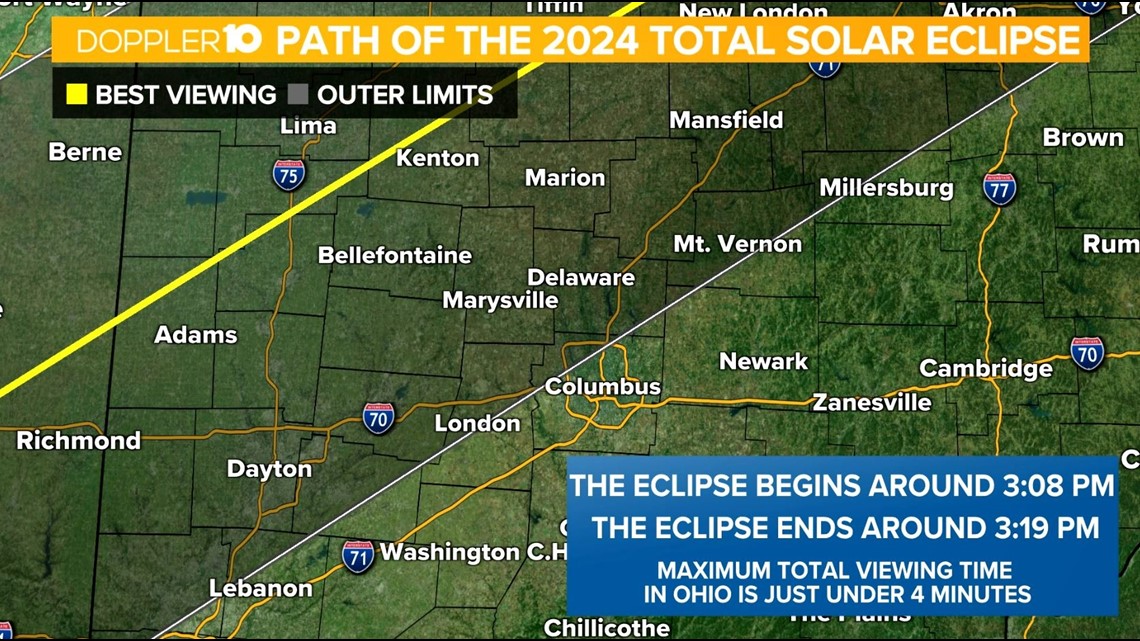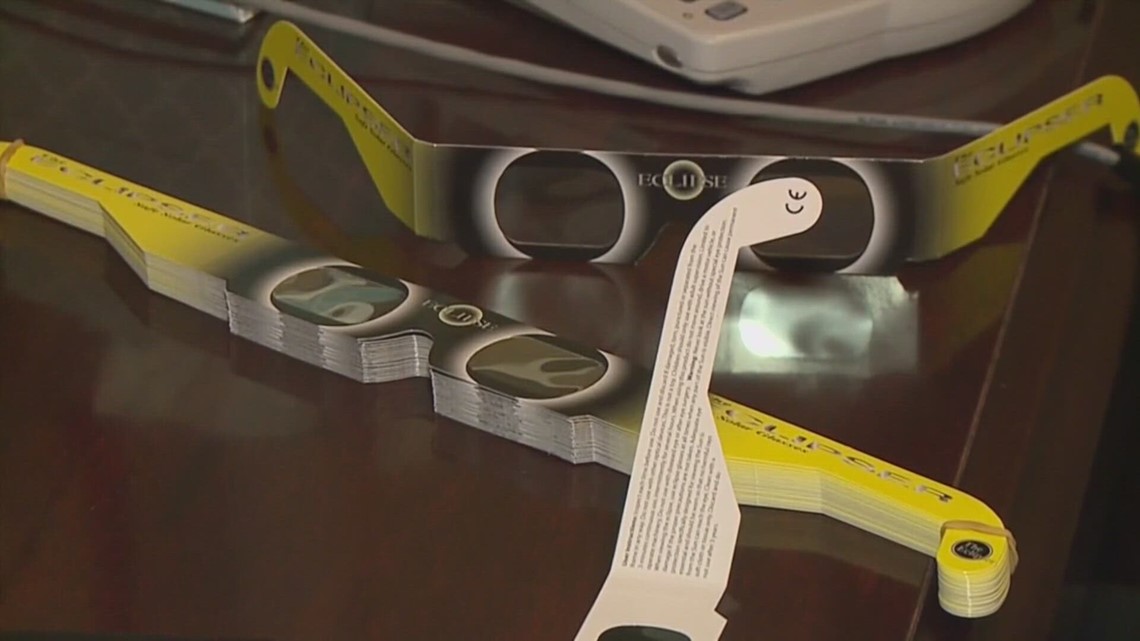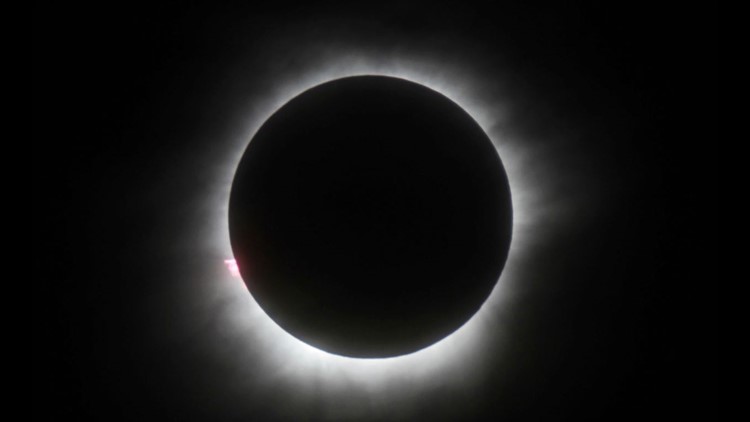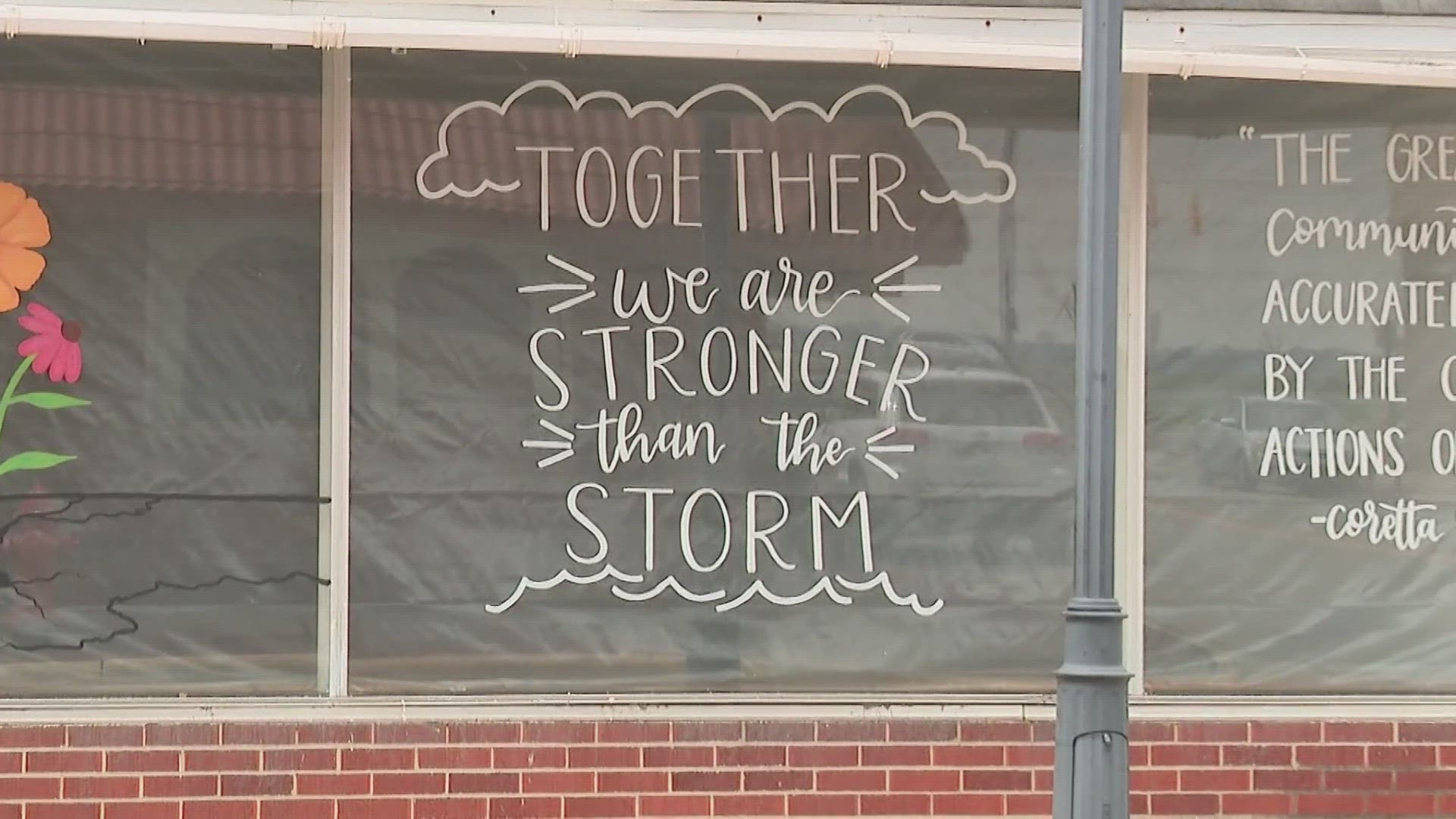COLUMBUS, Ohio — The total solar eclipse on Monday is expected to bring thousands of people to Ohio, where many major cities sit in the direct path of totality.
The last time the state has seen a total eclipse like this was in 1806, making this a once-in-a-lifetime event.
While the path of totality covers much of northern Ohio, areas of central Ohio may be able to catch the brief moments of total darkness, while others will see the sun at least 95% blocked by the moon.
For those planning on watching the eclipse on April 8, here are a few things to know ahead of time...


Ohio will begin to see the partial eclipse just before 2 p.m. and it will end around 4:30 p.m. The total solar eclipse will begin around 3:10 p.m. for several communities and end around 3:14 p.m. with a maximum viewing time in Ohio just under four minutes.
Depending on where you are in Ohio, the start and end times will vary slightly.
Cleveland is one of the best places in Ohio to view the eclipse as it lies close to the center line in the path of totality and will spend nearly four minutes in darkness. Totality will begin there around 3:13 p.m. and end around 3:17 p.m.
In Toledo, totality begins at 3:11 p.m. and ends at 3:13 p.m. Dayton will see totality from 3:09 p.m. to 3:12 p.m.
While Columbus does not sit in the direct path of totality, it will still see the sun blocked about 99% of the way by the moon. The partial eclipse will start in Columbus at 1:55 p.m. and end at 4:26 p.m. The maximum eclipse can be viewed at 3:12 p.m.
For a breakdown of cities in central Ohio with a view of the total solar eclipse, click here.


Plenty of sunshine is in the forecast for Saturday and Sunday, but things get less certain as we head into the day of the eclipse itself. Clouds are expected in much of the eclipse's path on Monday thanks to storms that are moving across the central U.S.
The forecast is currently looking to include partly cloudy skies and at least a small chance for rain. If you get caught under the wrong cloud during Monday afternoon you could end up missing the view of totality, but the horizons and the sky will still be rather impressive.


Special eclipse glasses are important in keeping your eyes safe during the solar eclipse. The only time it is safe to look directly at the eclipse with the naked eye is during totality - if you're located within the path of totality. Before and after, certified eclipse glasses should be worn to avoid eye damage.
Cameras, binoculars and telescopes must be outfitted with special solar filters for safe viewing.
The American Astronomical Society Solar Eclipse Task Force vetted sellers and compiled a list of trusted manufacturers and suppliers of eclipse glasses here.
Grocery stores and office supply chains like Staples may carry eclipse glasses in your area.
Want to make your own solar eclipse viewers? NASA's Jet Propulsion Laboratory has provided a step-by-step guide for how to make a pinhole projector.
While the eclipse is toward the end of most school days, the Ohio Department of Education said on its website that a number of factors could play in to schools deciding to cancel classes or dismiss them early. Some contributing factors are an increase of tourists in the state, especially near the center line of totality, as well as heavy traffic and bandwidth for cell service and internet could be diminished.
Some of the schools that have announced their decision are South-Western City Schools (no school), Dublin City Schools (no school), Columbus City Schools (no school), Reynoldsburg City Schools (no school) and Bexley Schools (early release). Click here to view our full list.
Communities are preparing viewing events and watch parties to celebrate this once-in-a-lifetime event. Most of the events will begin a few hours before the total solar eclipse begins in central Ohio, with activities and entertainment available for those attending. Some of the viewing events are free, but others require a paid ticket or reservation.
Cities hosting watch parties include Hilliard, New Albany, Westerville and Worthington, all of which are free to attend. Other locations hosting events include the Delaware Historical Society, The MAiZE at Little Darby Creek, the Morrow County Fairgrounds and Ohio Caverns. Click here to view more details about these events and many others.
The Ohio EMA urges those traveling to see the eclipse to make a preparedness kit for their vehicle and include items like snacks, drinks, cash, cell phone chargers and blankets. Motorists should top off their fuel tanks or fully charge their electric vehicles before heading out.
The Ohio Department of Transportation is treating the solar eclipse like a major travel holiday by restricting roadwork and reducing the size of active work zones as much as possible to accommodate the extra traffic.
Due to the potential for cell phone service interruptions, travelers are urged to have a paper map with them to assist with navigation.
On Monday, you can watch 10TV's two-hour special "Great American Eclipse" where we'll provide last-minute viewing, safety and travel tips before totality begins. You can also watch our live coverage on 10TV, the free 10TV mobile app, 10TV.com and 10TV+ — our free streaming app available on Roku, Amazon Fire TV and Apple TV.



